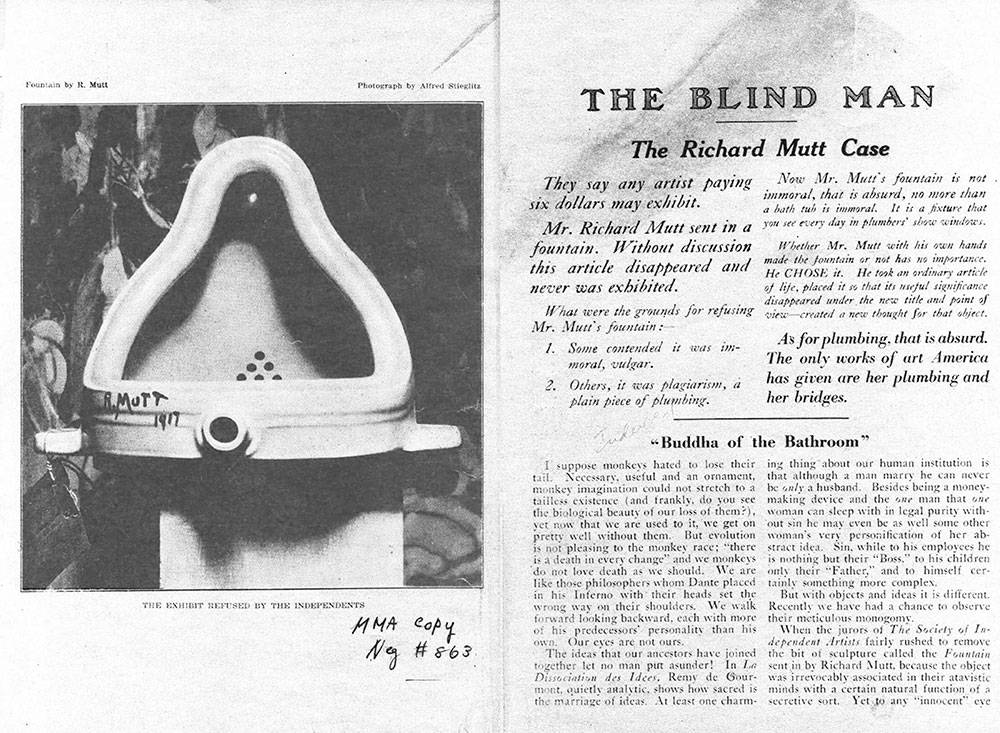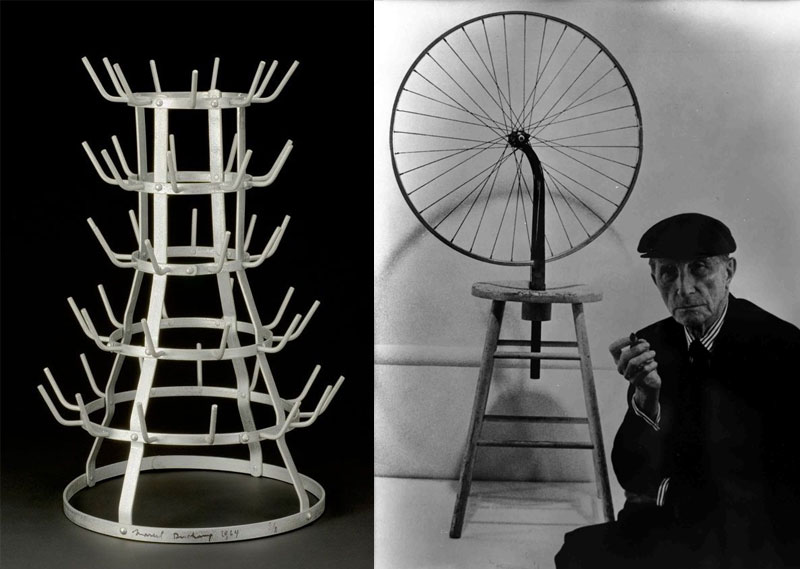The Readymade is a form of appropriation art invented and exclusively practised by Marcel Duchamp, who was connected with the Dadaists but generally distanced himself from any school of art.
The first and most famous readymade was the urinal that Duchamp signed “R. Mutt” and submitted under the title Fountain for an open exhibition of the Society of Independent Artists in New York in 1917. The Society was intended to promote avant-garde art by lesser-known or unknown artists and technically it had decided to avoid bias by displaying the works alphabetically by the last names of the artists and to exhibit any artwork submitted as long as you paid the $6 exhibition fee.
Duchamp was not just a member of the Society but the head of the hanging committee for the exhibit. Nevertheless, the Board – probably not aware that the work was by Duchamp – refused to exhibit the piece, telling the press “The Fountain may be a very useful object in its place, but its place is not in an art exhibition and it is, by no definition, a work of art.” The incident created public interest and some controversy in the press.
The famous American photographer Alfred Stieglitz photographed the rejected work, and later commented “Everyone who has seen it thinks it beautiful – And it’s true – it is. It has an oriental look about it – a cross between a Buddha and a Veiled Woman.”
The photograph appeared in the Dadaist journal The Blind Man later that year, with an anonymous editorial defending the work.

The editorial contains two ideas that have become important in 20th century art. There is the idea of curatorial choice being a form or artistry, an idea that returns with the mixtape and the dj mix in music much later. And there is the idea of recontextualization/ decontextualization that will lead to artistic contemplation and thereby thinking: “He took an article of life, placed it so that its useful significance disappeared under the new title and point of view – created a new thought for that object.” The idea that art was intended to make you think, as opposed to making you feel, or experience beauty or pleasure, is a constant one in the 20th century avant-garde, and Duchamp’s Fountain is arguably the first instance of conceptual art. Though Duchamp never clearly stated what his intention was, it is safe to say that it was intellectual rather than aesthetic. He claimed to be interested in breaking free from what he called “retinal” forms of art (i.e., visual ones) and remarked that “it was always the idea that came first, not the visual example.”
Duchamp created a number of these pieces, which he called readymades, in the 1910s, and others throughout the next 30 years or so. One of the better known ones is the Bottle Rack, which is a rack manufactured at the time on which washed out bottles could be dried. He dreamt up new sub-categories, including the assisted readymade, where more than one manufactured article is used. The most famous of these is the Bicycle Wheel, which is also usually credited with being the first piece of kinetic sculpture (sculpture that has moving parts).

Marcel Duchamp, Bottle Rack (1914) and Bicycle Wheel (1913)
Here is a brief excerpt of a recording of Duchamp discussing his readymades in 1965: